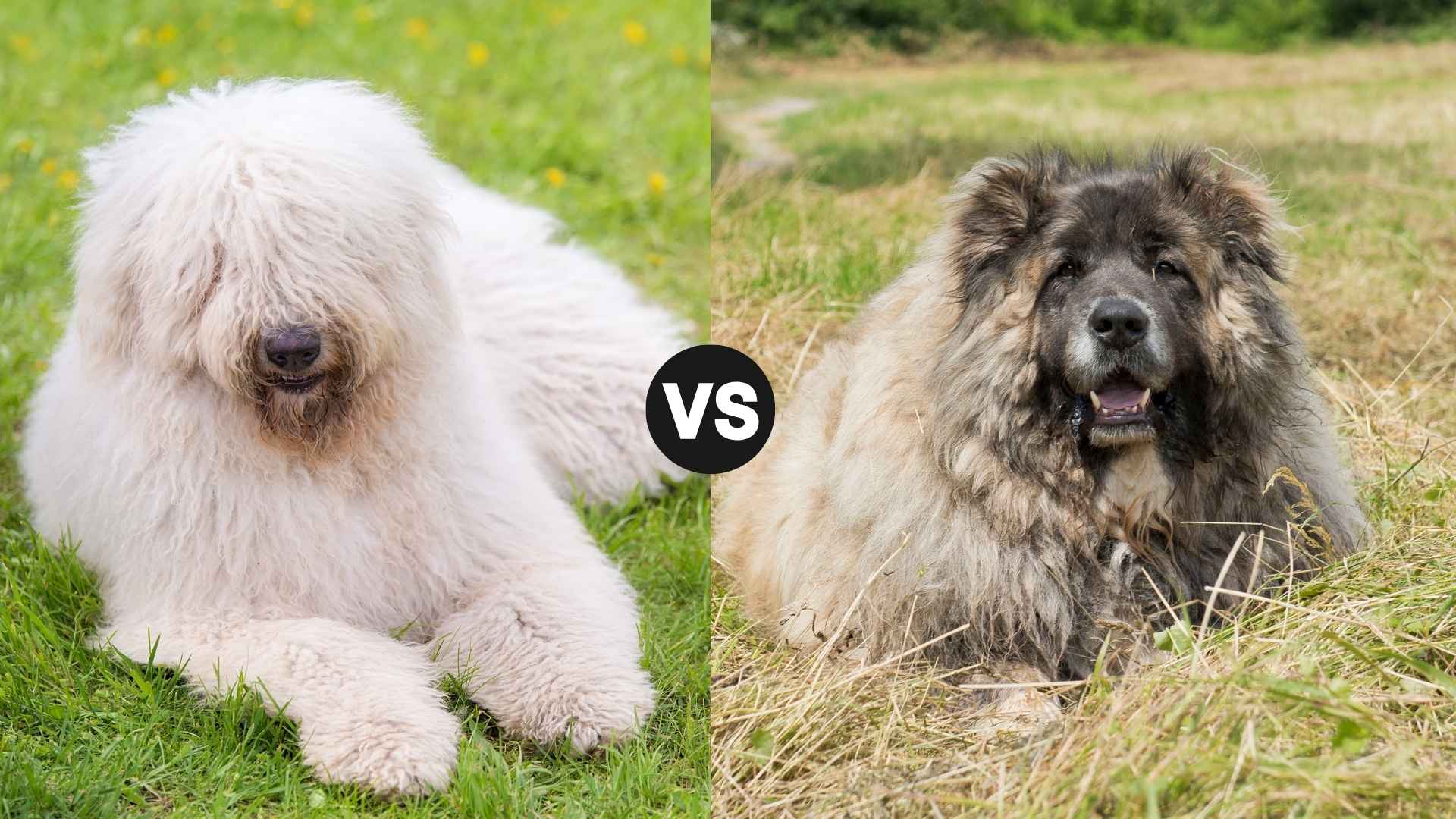When it comes to impressive livestock guardians, few breeds stand out quite like the Komondor and the Caucasian Ovcharka. Often referred to as the “mop dog” for its unmistakable corded coat, the Komondor hails from Hungary and has been recognized as one of the nation’s treasured breeds for centuries. Originally bred to protect livestock, this independent and loyal dog is closely related to other herding breeds like the Puli and the Bearded Collie.
On the other hand, the Caucasian Ovcharka—also known as the Caucasian Shepherd Dog—is a powerful guardian from the Caucasus Mountains, believed to descend from domesticated wolves or Mastiff-type breeds. Known for its courage and protective instincts, this ancient breed has even served as a patrol dog along the Berlin Wall in the 1960s.
In this blog, we’ll explore the differences and similarities between these two majestic protectors to help you understand which might be the better fit for your needs.
Komondor vs. Caucasian Ovcharka
The Komondor, known for its iconic white corded coat, is a centuries-old Hungarian working breed developed to guard livestock. Its dreadlock-like corded hair is not just a unique visual trait—it serves as insulation against harsh weather and protection from predators.
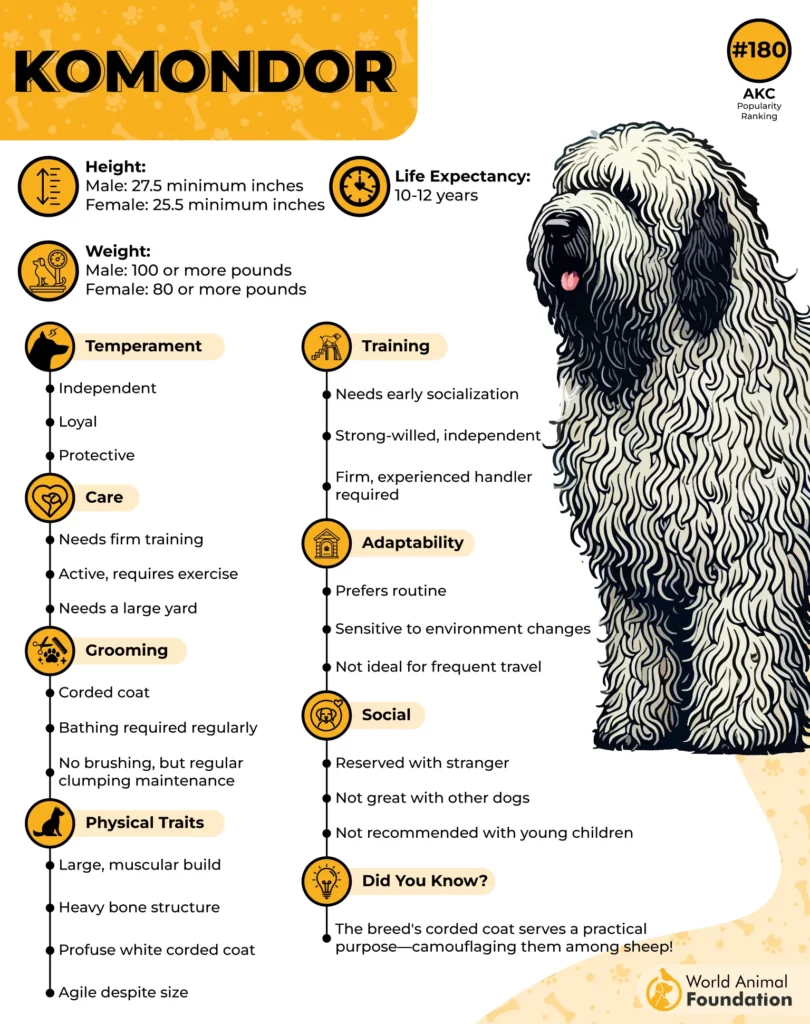
This large, muscular dog is deeply territorial and naturally distrustful of strangers, making it a formidable guardian and watchdog. Closely related to the Puli and Kuvasz, the Komondor was bred to blend in with sheep and act with surprise when predators approached. Due to its independent nature and physical strength, it requires experienced handling and dedicated training.
In contrast, the Caucasian Ovcharka—also known as the Caucasian Shepherd Dog or Russian Bear Dog—originates from the mountainous regions of Eastern Europe and Asia. Historically used as livestock guardians to protect flocks from wolves and bears.
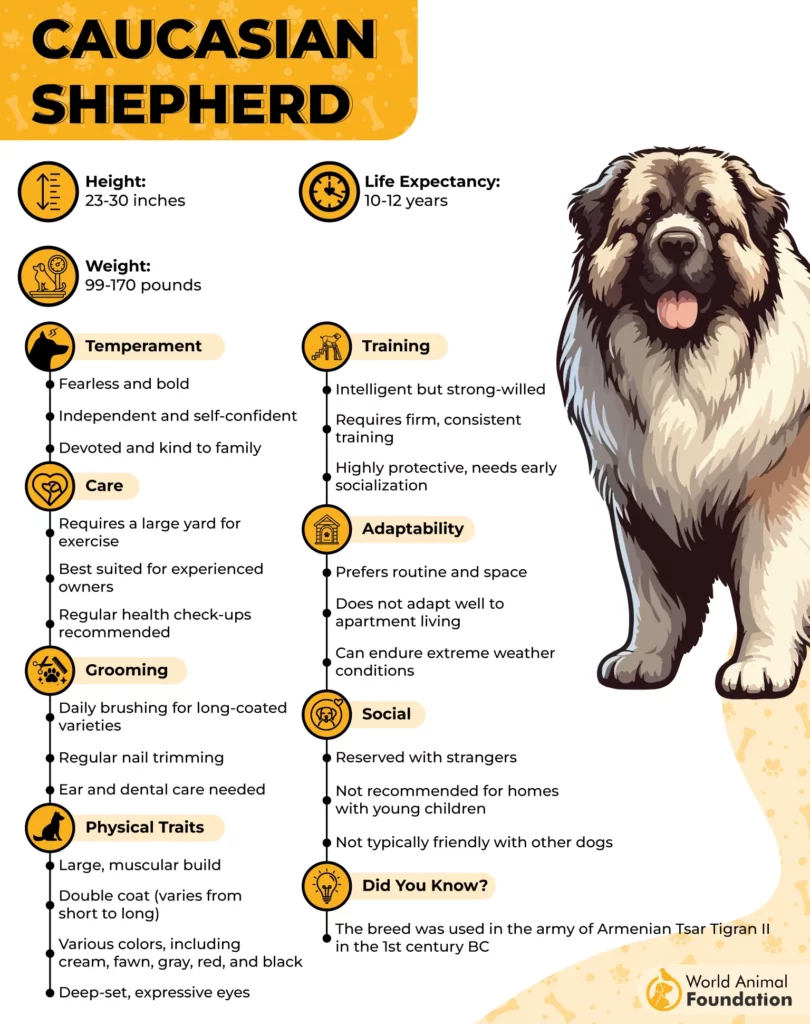
Soviet breeders began refining the breed in the 1900s to enhance its strength, confidence, and adaptability. In the 1960s, East Germany employed the breed as border patrol dogs along the Berlin Wall. Though rare in North America, this imposing dog remains a vigilant protector with a fiercely independent streak, making it more suitable for experienced dog owners rather than first-time pet parents.
Appearance and Distinctive Features
The Hungarian Komondor is instantly recognizable by its dense, white corded coat resembling long dreadlocks or a mop—earning it the nickname “mop dog.” This unique coat offers protection from harsh weather and predators while helping the dog blend in with sheep.
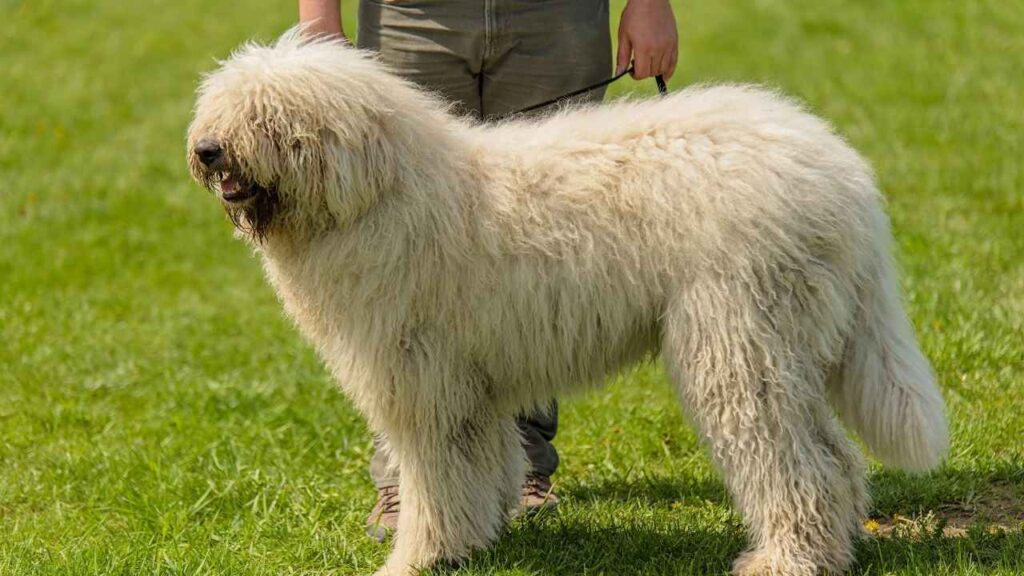
Adult males can exceed 27.5 inches in height and weigh over 100 pounds, with a strong, muscular build, large head, and heavy bones. Despite their bulk, Komondorok are agile and move with long, smooth strides. Their rope-like cords require consistent manual maintenance to prevent matting and maintain their signature look.
The Caucasian Ovcharka, or Caucasian Shepherd, is a massive and powerful breed that can reach an average of 30 inches in height and weigh up to 170 pounds. Males are typically larger and more muscular than females, with broader heads.
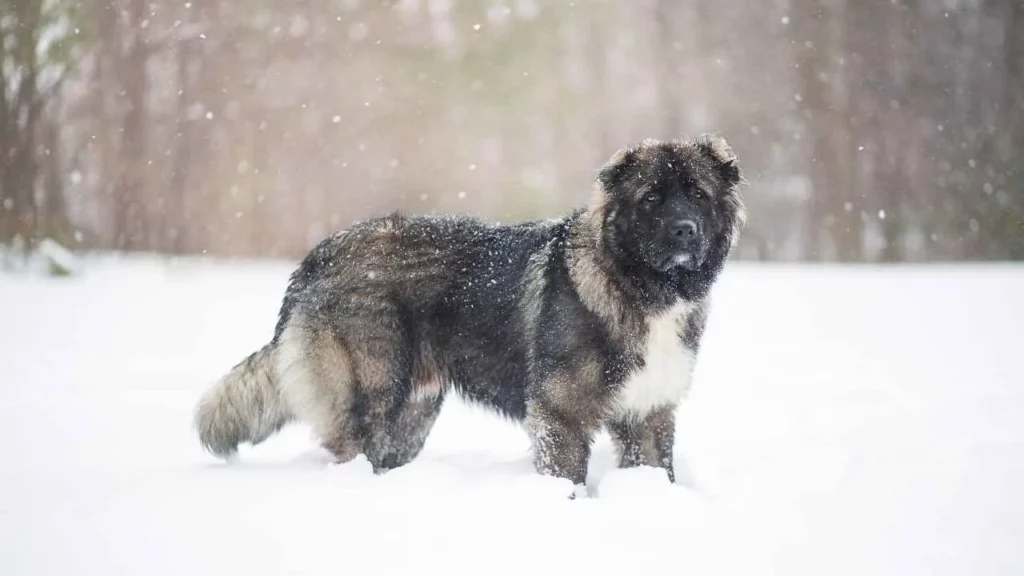
This breed comes in two types: the heavy-coated Mountain variety and the lighter Steppe variety. Their thick double coat comes in various colors, including white, gray, fawn, and brindle, often with distinctive markings. With deep-set eyes, a broad chest, and curled tail, the Caucasian Shepherd exudes strength and confidence.
Temperament and Behavior
Bred as a guardian dog, the Komondor is naturally protective, brave, and independent. Loyal to their families, they maintain a quiet yet alert presence and will bark when sensing anything unusual. Though strong-willed, they are affectionate with trusted people and can be gentle with small children and pets, but early socialization is essential. Training and regular exposure to new people help manage their natural wariness and shape them into reliable protectors.
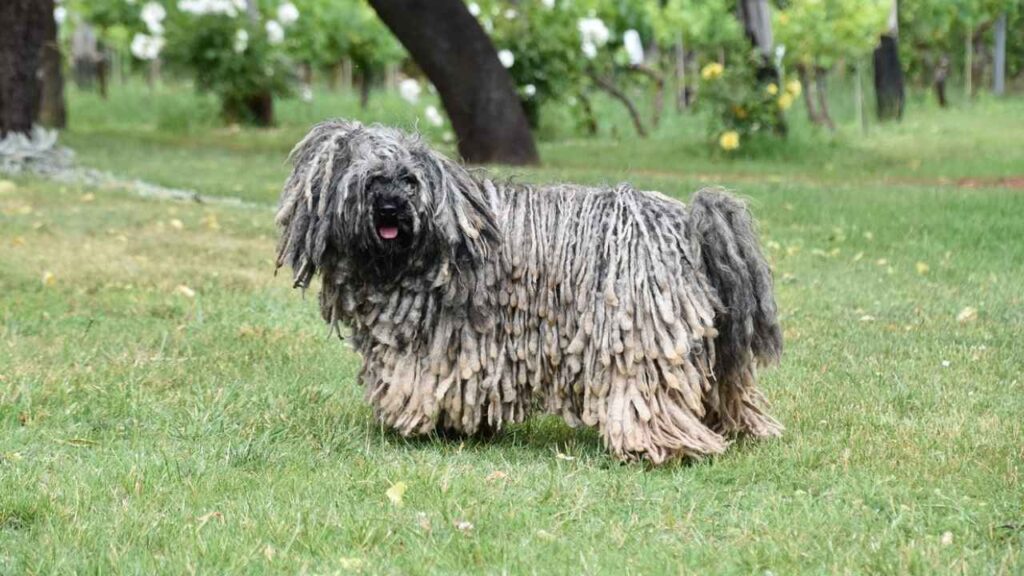
The Caucasian Ovcharka is a bold, independent guardian breed with a strong distrust of strangers and other pets. Best suited as the only pet in a quiet home, they’re not ideal for families with young children due to their intolerance for rough handling. Loyal but sensitive to change, they require a calm, experienced owner who can offer firm leadership and a stable routine.
Training and Physical Activity
Despite their large size, Komondors are agile and need regular exercise to stay healthy and balanced. Daily walks, secure yard play, and interaction with familiar dogs work best, while public dog parks are discouraged due to their strong guarding instincts.
Early, consistent training and firm leadership are essential, as they are independent and can become overly protective without clear guidance. By one year, they should reliably follow commands, with goals like earning an AKC CD obedience title being beneficial.
Caucasian Shepherds need daily outdoor activity, preferably in a secure, spacious yard. Though not highly energetic, they have strong endurance and enjoy long walks or hikes. Always keep them leashed or contained due to their protective nature.
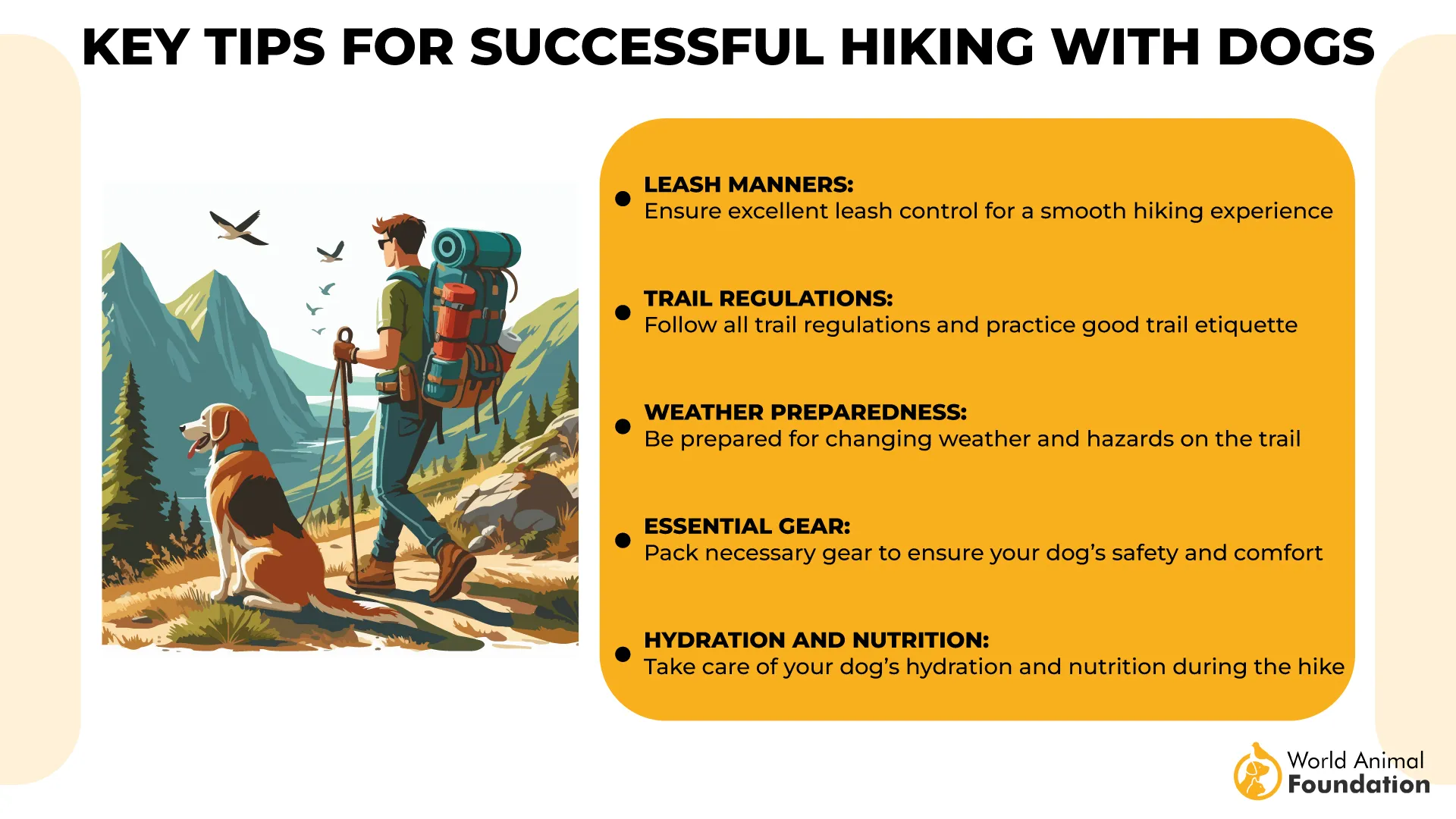
Training can be difficult, but firm, experienced handling is vital. While active outside, they are typically calm indoors and thrive in stable homes with consistent routines and plenty of space.
Nutrition and Dietary Needs
Komondor needs a high-quality, AAFCO-approved diet suited to their age. Adults do well with two meals daily, while puppies need three to four. Avoid table scraps, bones, and fatty foods, as these can cause digestive issues or pancreatitis. Most Komondors get sufficient nutrients from balanced dog food, and supplements should only be used under a vet’s guidance, states PetMD.
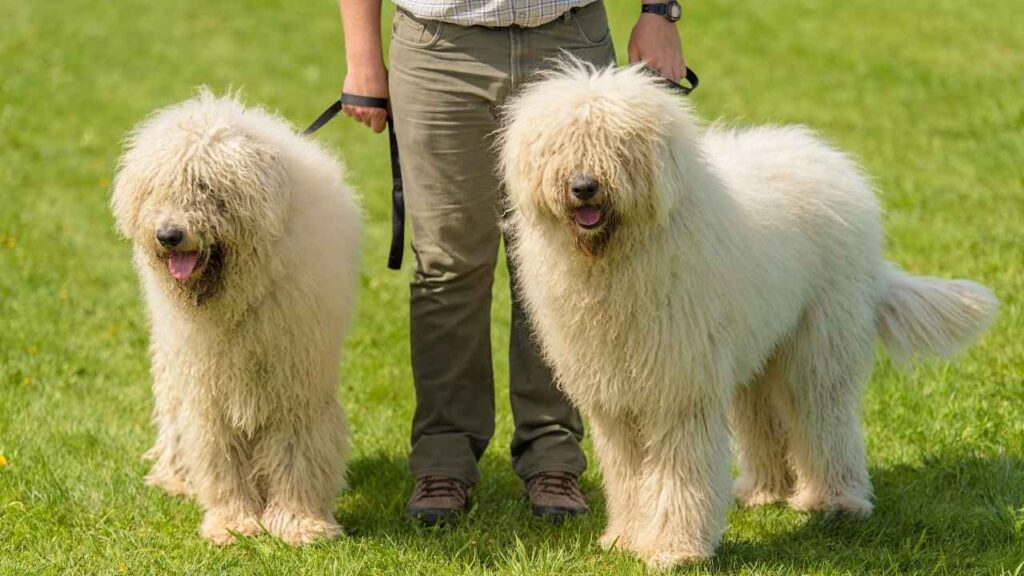
Caucasian Shepherds also require an age-appropriate, AAFCO-approved diet, with large-breed puppy food during growth. Puppies eat three to four meals a day, and adults twice daily. To prevent obesity and joint issues, portion control and slow-feeder bowls are helpful. While most don’t need supplements, vets may recommend joint support. Always provide access to clean water.
Health and Wellness
Komondors are generally healthy, but like many large breeds, they are at risk for specific health issues such as hip dysplasia and bloat. Reputable breeders typically screen their dogs through the Orthopedic Foundation for Animals (OFA) and perform eye health evaluations to ensure the overall well-being of the breed.
Bloat is a particular concern—this life-threatening condition involves a sudden enlargement and potential twisting of the stomach, requiring immediate veterinary intervention. Awareness of early symptoms is crucial for Komondor owners to respond swiftly and effectively.
The Caucasian Shepherd is generally healthy but can be prone to certain hereditary issues, including hip and elbow dysplasia, heart conditions like pulmonic stenosis, and entropion, an eye disorder where the eyelids roll inward. Obesity is also a concern, as excess weight can lead to serious problems like arthritis or diabetes, making proper diet and portion control essential, states PetMD.
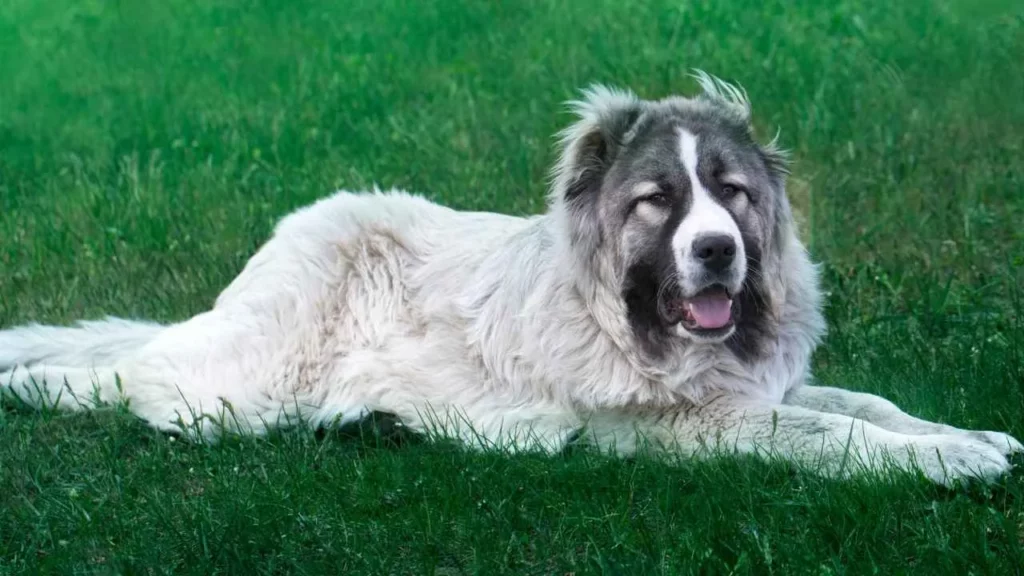
Additionally, this breed is at risk for bloat (gastric dilatation-volvulus), a life-threatening condition that requires immediate veterinary care. Regular checkups and preventive care are key to managing these potential health concerns.
Coat Care and Grooming
The Komondor’s iconic corded coat is made of a coarse outer layer and a soft undercoat that naturally forms tassel-like cords. These cords must never be brushed; instead, they require regular manual maintenance to prevent matting. Starting around 9–10 months of age, the coat should be carefully separated into individual cords from the skin outwards, states AKC.
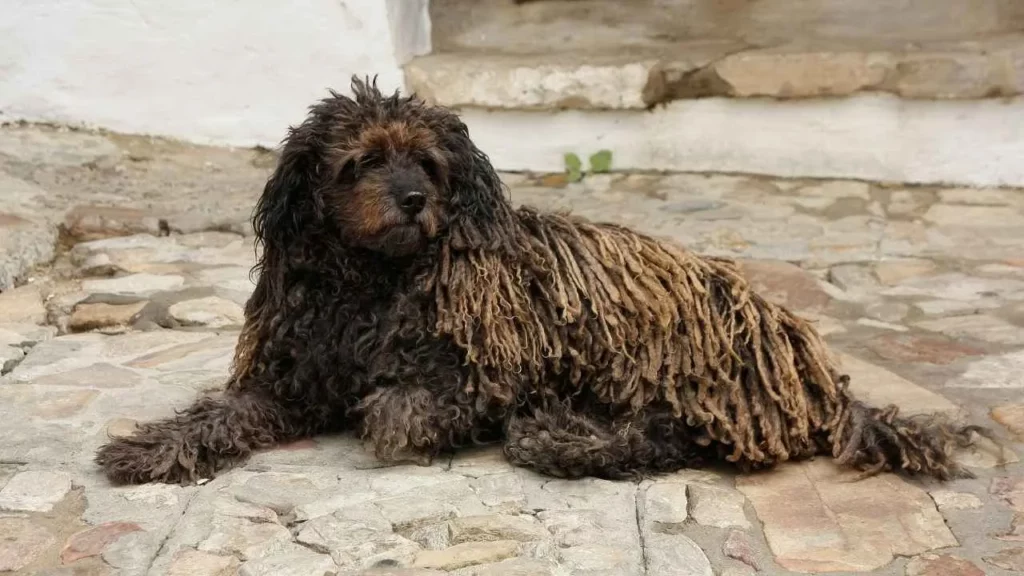
Bathing is essential to keep the coat clean—using diluted shampoo, thorough rinsing, and a slow, complete drying process with fans is key to preventing odor. Because few professional groomers are familiar with this coat type, Komondor owners must learn cord care themselves.
The Caucasian Shepherd comes in a range of coat lengths, with grooming needs varying accordingly. Short-coated dogs may only require brushing once or twice a week, while long-coated individuals need daily grooming to prevent tangles and manage shedding, especially during seasonal coat changes.
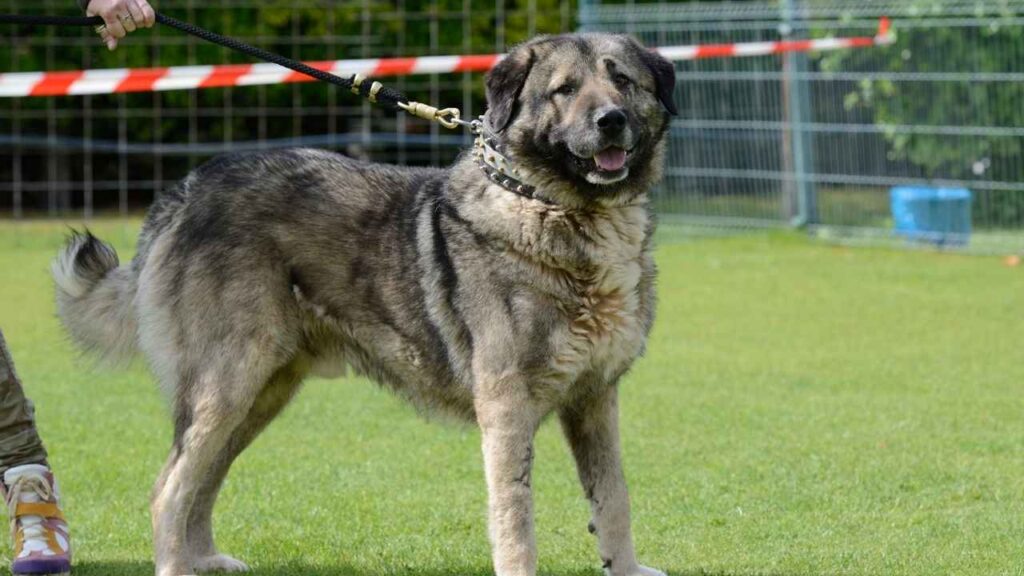
Routine care also includes monthly baths, regular nail trims, and weekly ear checks to avoid infection. Daily tooth brushing helps maintain dental health, and owners should be prepared for noticeable drooling, especially after meals or play. Grooming not only keeps the dog clean but also strengthens the bond between the pet and the owner.
Conclusion
Both the Komondor and Caucasian Ovcharka are powerful dog breeds with rich origins and strong guarding abilities. While their personalities and lifestyles differ—Komondors tend to be more agile and independent, and Caucasian Ovcharkas more robust and protective—both require experienced owners who understand the needs of big dogs.
First-time dog owners may find these breeds challenging due to their intelligence and strong-willed nature. For those seeking basic information on these unique breeds, it’s clear that their distinctive traits set them apart from other breeds, making them exceptional guardians with impressive abilities.


